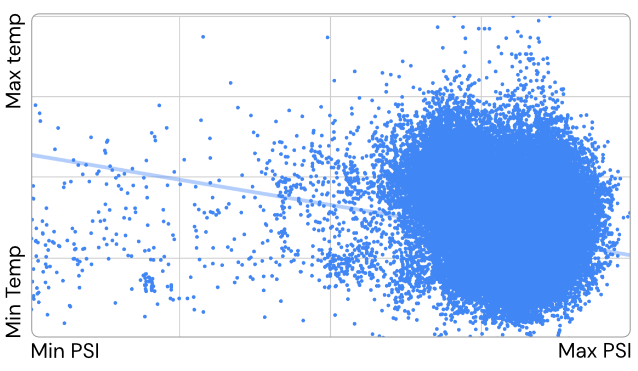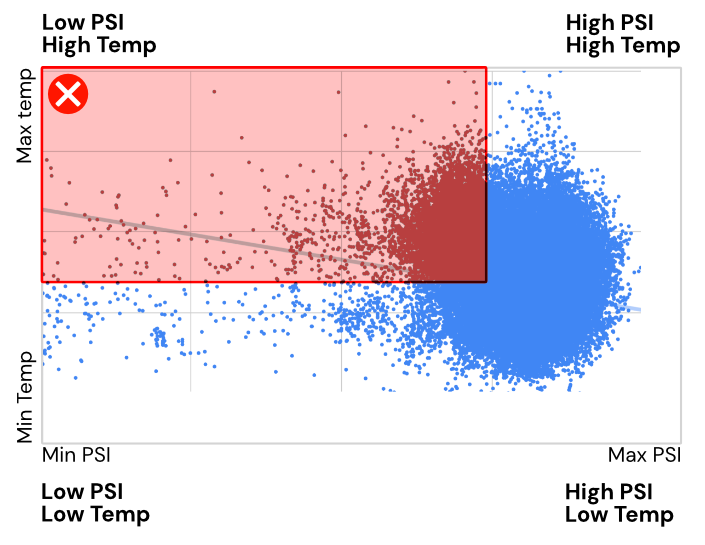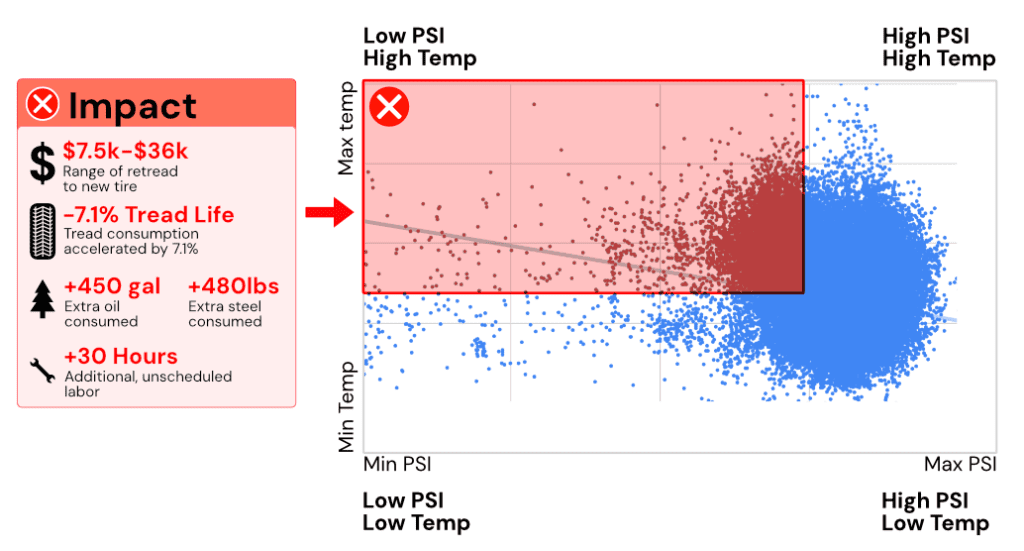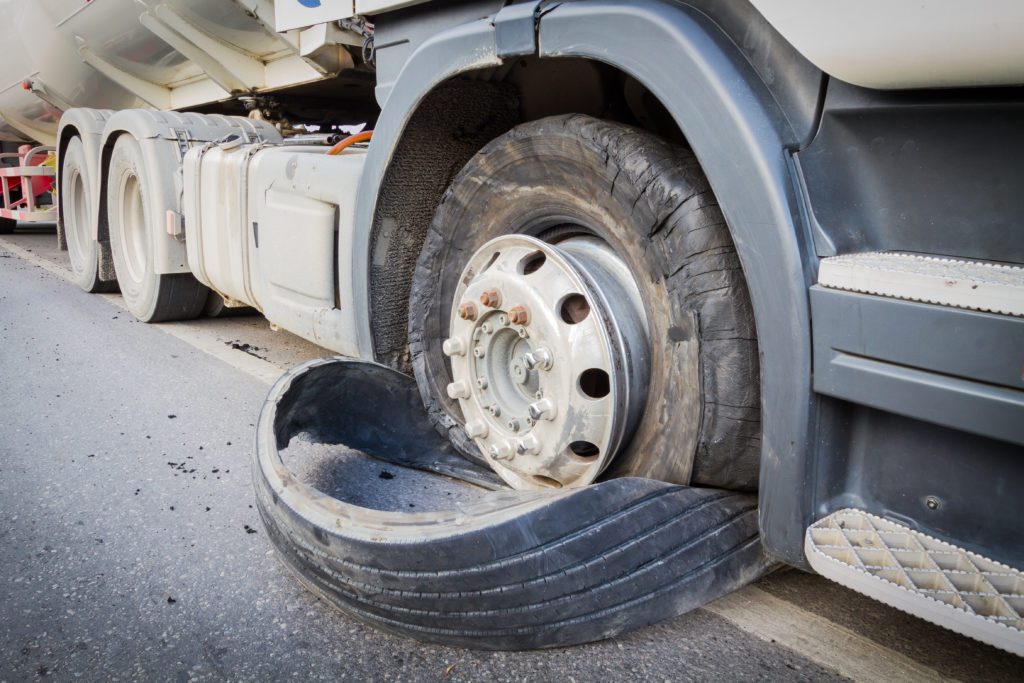Over the last several years, Revvo has collected billions of data points from tires in operation, and the connection is quite clear – when a tire drops in pressure, temperature goes up.

Across several different fleets, in different applications, in different locations, the correlation is still the same. In fact, in a sample of tires across several fleets outfitted with Revvo, tires that reach 180F or above, 77% are also under 80% of cold inflation pressure. There is a key factor here which also impacts the spike in pressure, steer tire temperatures spike quickly when under inflated because there is no mating tire in the front to help carry the load, and drive tire temperatures spike quickly when under inflated and carrying a load, the higher the load the quicker the spike.

Low tire pressure is by far the number one contributor to premature tire failure. However, if fleets can minimize the amount of time that low pressure tires are in operation there is a pretty good chance previously under inflated tires will be just fine. This is usually only true if fleets prevent under inflated tires from operating under a combination of conditions…under inflated, hot, and overloaded.


That combination can quickly result in tire failure. If you are lucky enough to avoid significant downtime and a potential accident due to a tire failing in operation, you may have skipped the downtime and additional costs, but still likely to prematurely lose a tire casing because of the inability to retread a tire, and that too can be expensive.
Tire pressure should be an easy checklist item to ensure the safety of tires prior to daily trips, but often ignored or purposely overlooked. Of course tires can go from good operational condition in one minute, to experiencing a puncture the next, and then it’s only a matter of time before pressure goes down and temperature goes up. Check out Revvo.ai to learn more about monitoring your tires in real-time.



